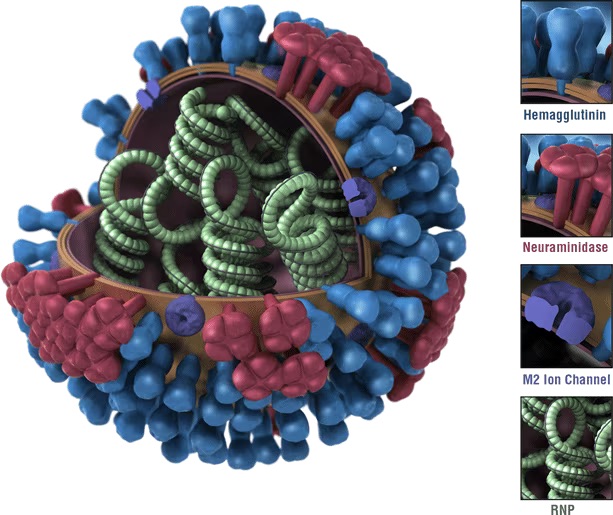January 22, 2024, 5:15 PM EDT
CDC is posting updates on respiratory viruses every week; for the latest information, please visit CDC Respiratory Virus Updates.
CDC tracks spread of influenza viruses
While COVID-19 continues to cause more hospitalizations than influenza and respiratory syncytial virus (RSV), right now, more people are going to emergency departments to get care and being diagnosed with flu than COVID-19. With seasonal flu activity elevated across the country, CDC is tracking which influenza viruses are most common, where they are occurring, and how this might impact the public’s health. Since the fall, emergency department visits have been increasingly driven by flu. While some recent data suggest flu may have peaked, CDC is watching closely for a second wave of flu activity, which happens during many seasons.
The mix of influenza viruses circulating varies by region, but the most commonly reported influenza viruses this season are type A(H1N1) and type B viruses. This might mean more severe outcomes among people who are hospitalized with flu this season. A study by CDC found that A(H1N1) and B viruses caused severe illness more frequently among hospitalized patients compared to A(H3N2) viruses. More severe illness could create greater demand for healthcare, potentially increasing strain on hospitals.
The fact is that every flu virus has the potential to cause serious illness, regardless of which virus it is. Vaccination can help prevent the most serious effects of flu, but as of January 6, 2024, it is estimated that 46.8% of the adult population was vaccinated in the United States for the 2023-2024 season.
As a reminder, there are effective vaccines and treatments, as well as other preventive actions that can reduce your risk of getting sick and take your illness from “wild to mild” if you are vaccinated but still get sick. This season’s flu and COVID-19 vaccines are well-matched to the viruses that are most common and should offer good protection from severe illness.
JN.1 is still the most prevalent variant
CDC continues to track the rise in prevalence of the JN.1 variant of SARS-CoV-2, the virus that causes COVID-19. JN.1 remains the most widely circulating variant of SARS-CoV-2 in the United States and globally.
As of January 19, 2024, JN.1 is estimated to account for approximately 83% to 88% of all currently circulating SARS-CoV-2 variants, an increase from the estimated prevalence of 55% to 68% two weeks ago. JN.1 remains at high prevalence among variants in international travelers and wastewater viral levels, as well as in most regions around the globe.
COVID-19 activity is currently high, most prominently in the eastern half of the country. COVID-19 infections, hospitalizations, and deaths have remained elevated in recent weeks. JN.1 is contributing to the spread of COVID-19 this winter. CDC continues to learn more about JN.1, but currently there is no evidence that it causes more severe disease. Current COVID-19 vaccines are expected to increase protection against JN.1, as they do against other variants, by helping prevent severe illness.





